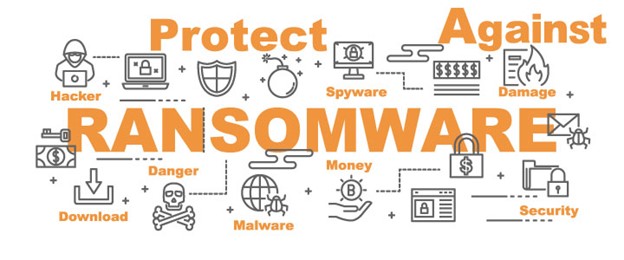Effective Data Security and Ransomware Protection with TeraStation Network Storage

Ransomware has been identified by the U.S. Department of Homeland Security as one of the fastest growing security threats to businesses all around the world. SMBs often have smaller IT budgets that prevent them from maintaining effective ransomware protection, so ransomware can—and will—hit SMB especially hard, often causing devastating damage to a business. There are countless stories of small businesses with little protection in place being the victim of a ransomware attack, and they are harsh—and very expensive—wake-up calls to the fact that if ransom isn't paid, the business is simply dead in the water, with no recourse.
In order to help smaller businesses combat ransomware, the Buffalo TeraStation network attached storage devices have been designed as a secure, on-site data backup solution that supports both cloud integration and off-site replication, while maintaining several native security features to protect your data without demanding extra cost and effort from you.
Modern Ransomware: An Evolving Threat
Modern ransomware actors have started moving into a new direction: instead of encrypting a victim's files, they are exfiltrating it. This bypasses the possibility of a business attempting to recover the data, as the threat in this case is exposing or publicizing private critical data. For businesses that hold or process intellectual property data, proprietary information, or private user data (employee or customer), this presents a dangerous concern.
Modern ransomware has also become more precise in their attack strategies and target data. Instead of utilizing blanket social engineering tactics such as email spam and phishing, dedicated attackers are now spending significant time and energy infiltrating and subjugating different network components so when the attack is finally executed, it seems that it came out of nowhere and becomes nearly impossible to eradicate. This makes many attacks seem like advanced persistent threats (APT), overwhelming even the most prepared systems.
The 3-2-1 Method and the Importance of On-site Backups
After you are attacked by ransomware, cybercriminals can use the compromised data to go after both your business and your customers in what is referred to as a supply chain attack, leading to potentially large-scale data and business loss.
Because ransomware is constantly evolving, the only real ransomware protection is to initiate a robust backup strategy that includes a physical on-site backup location. For example, modern ransomware has evolved to not only go after your data but also backup copies of the same data on the domain. This is why it is a good idea to have a copy of your data off of the domain, as if your domain administrator is compromised you may not have access to your backups.
While the established 3-2-1 backup method (keep three copies of your data, with two copies on-site and one copy off-site) is a great way to protect your data, there are other backup methods that may suit you and your business.

The inherent security risks of cloud storage are well-known. Many industries have strict regulations regarding sensitive data storage and cloud storage doesn’t always meet compliance. This is why it is imperative to have a flexible, physical on-site backup location, preferably air gapped, so your backups remain truly safe from cyberthreats.
Data Protection Features of Buffalo Network Attached Storage
Ransomware protection can be difficult to mount, and there is no foolproof method to protect your data. However, a data security strategy revolving around frequent and secure data backups can go a long way. TeraStation Network Attached Storage come with a myriad of robust data protection features such as RAID, automated backups, snapshot, hybrid cloud, replication, and failover to protect your and your clients’ data from ransomware and other threats.
Closed System
One of the strongest security features of Buffalo NAS is that our devices run on closed systems, with not even the system administrator having root rights. Many competitors’ devices allow third party apps to be installed via an app store, which is a possible vector for malware such as ransomware and spyware. The TeraStation only allows connections to available network services, and you have the option to further control which connections to utilize.
Automatic Backups and Replication
Backups should always be created with recovery in mind—after all, what good is having them if you can’t access the data quickly in a pinch? Automatic backups and replication using Buffalo TeraStation NAS devices can be effortless yet effective components of your backup strategy. You can easily schedule backups automatically into a secure location without affecting your daily operations, and quickly access backed up files and restore them in an emergency without jumping through hoops.
Hybrid Cloud
TeraStation NAS can integrate third-party cloud services with your company’s on-premises private cloud into a single hybrid cloud environment. By keeping less critical data on a cloud while storing your more critical data on-site, you can enjoy a flexible, streamlined storage and backup solution that maintains the security of the 3-2-1 method without raising costs.
Build Your Ideal Storage Network to Protect Your Data
With the TeraStation Network Attached Storage, you can integrate a secure storage and backup solution into your network to protect your data. Coupled with native features such as a closed operating system for security and a 2.5GbE port for faster data access and file transfers, the TeraStation 3020 can serve as a secure backup location to help protect your data against ransomware.



